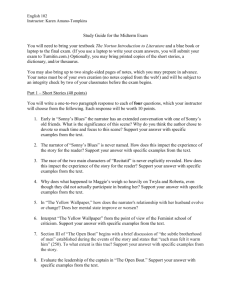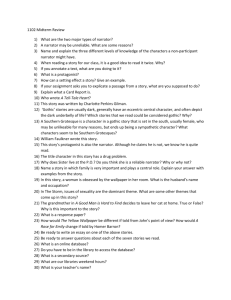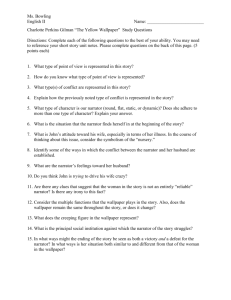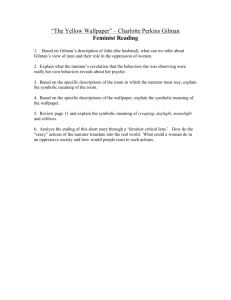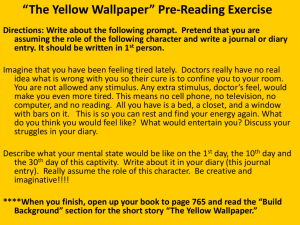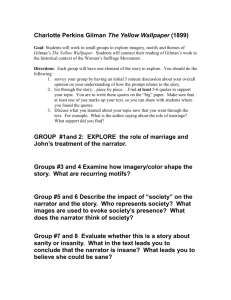English 102 Instructor: Karen Amano
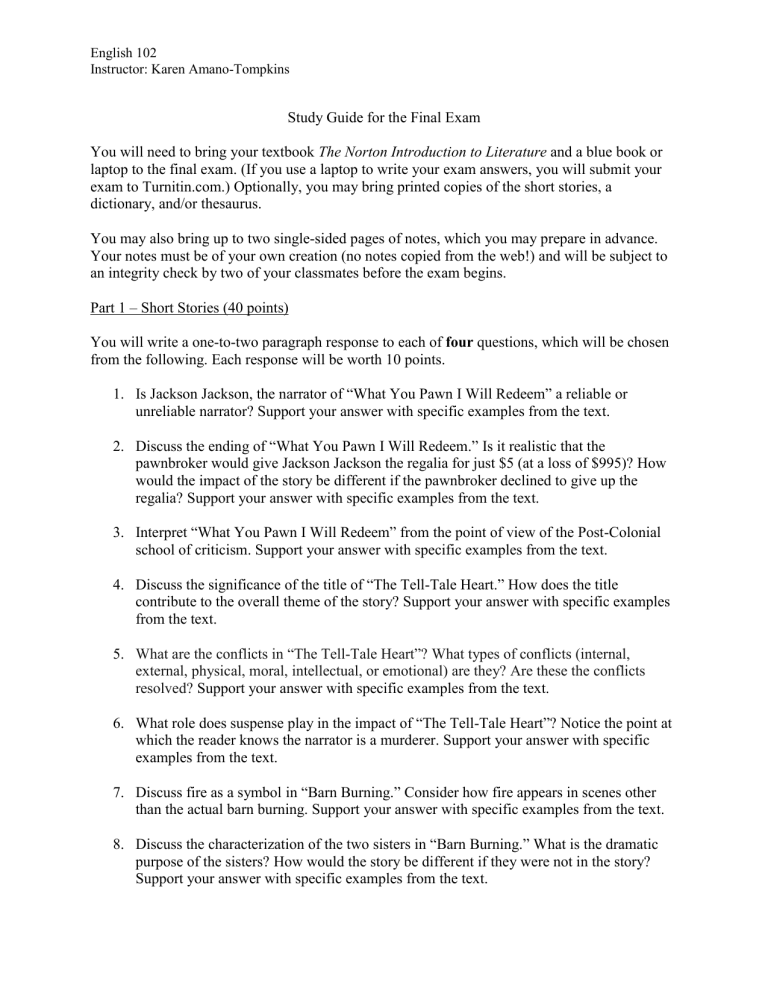
English 102
Instructor: Karen Amano-Tompkins
Study Guide for the Final Exam
You will need to bring your textbook The Norton Introduction to Literature and a blue book or laptop to the final exam. (If you use a laptop to write your exam answers, you will submit your exam to Turnitin.com.) Optionally, you may bring printed copies of the short stories, a dictionary, and/or thesaurus.
You may also bring up to two single-sided pages of notes, which you may prepare in advance.
Your notes must be of your own creation (no notes copied from the web!) and will be subject to an integrity check by two of your classmates before the exam begins.
Part 1 – Short Stories (40 points)
You will write a one-to-two paragraph response to each of four questions, which will be chosen from the following. Each response will be worth 10 points.
1.
Is Jackson Jackson, the narrator of “What You Pawn I Will Redeem” a reliable or unreliable narrator? Support your answer with specific examples from the text.
2.
Discuss the ending of “What You Pawn I Will Redeem.” Is it realistic that the pawnbroker would give Jackson Jackson the regalia for just $5 (at a loss of $995)? How would the impact of the story be different if the pawnbroker declined to give up the regalia? Support your answer with specific examples from the text.
3.
Interpret “What You Pawn I Will Redeem” from the point of view of the Post-Colonial school of criticism. Support your answer with specific examples from the text.
4.
Discuss the significance of the title of “The Tell-Tale Heart.” How does the title contribute to the overall theme of the story? Support your answer with specific examples from the text.
5.
What are the conflicts in “The Tell-Tale Heart”? What types of conflicts (internal, external, physical, moral, intellectual, or emotional) are they? Are these the conflicts resolved? Support your answer with specific examples from the text.
6.
What role does suspense play in the impact of “The Tell-Tale Heart”? Notice the point at which the reader knows the narrator is a murderer. Support your answer with specific examples from the text.
7.
Discuss fire as a symbol in “Barn Burning.” Consider how fire appears in scenes other than the actual barn burning. Support your answer with specific examples from the text.
8.
Discuss the characterization of the two sisters in “Barn Burning.” What is the dramatic purpose of the sisters? How would the story be different if they were not in the story?
Support your answer with specific examples from the text.
English 102
Instructor: Karen Amano-Tompkins
9.
Discuss the characterization of Abner Snopes (the protagonist’s father) in “Barn
Burning.” Support your answer with specific examples from the text.
10.
In “The Yellow Wallpaper,” how does the narrator's relationship with her husband evolve or change? Does her mental state improve or worsen?
11.
Aside from the wallpaper itself, how does the setting of “The Yellow Wallpaper” contribute to the theme? Support your answer with specific examples from the text.
12.
Interpret “The Yellow Wallpaper” from the point of view of the Feminist school of criticism. Support your answer with specific examples from the text.
Part 2 – Poetry (30 points)
1.
You will be asked to discuss the progression of images in a poem that will be provided.
You will want to consider how the accumulation of images contributes to the theme and how the title contributes to an understanding of the poem. Your response should be twoto-three paragraphs long and is worth 15 points.
To prepare for this question, review the chapter on Visual Imagery and Figures of Speech in poetry on pages 560-569, of The Norton Introduction to Literature .
2.
You will be asked to discuss the alliteration, rhyme, and meter of a poem that will be provided. Specifically, you will want to consider how these formal elements contribute to the meaning and impact of the poem. Your response should be two-to-three paragraphs long and is worth 15 points.
To prepare for this question, review the chapters on The Sounds of Poetry on pages 586-599 of The Norton Introduction to Literature .
